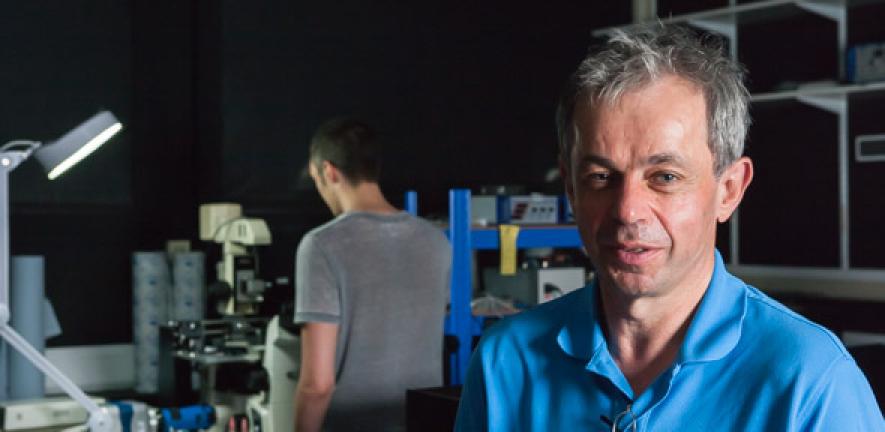
T cells play a key role in the body’s immune response to infections and diseases such as cancer. Scientists have long known that T cells use their long fingers, called microvilli, to probe target cells, but they didn’t know why.
Now researchers from the Klenerman and Lee labs, working with colleagues at the John Radcliffe Hospital in Oxford, have the answer. The research has been published in Nature Communications.
Stretching out their fingers
T cells target toxic cells known as antigen producing cells (APCs). The APCs are protected by a highly charged, barrier-like layer of large molecules, called a glycocalyx.
Professor Sir David Klenerman, who co-led the study, said: "We wanted to understand how T cells interact with APCs, so we created a model that mimicked an APC cell surface with a glycocalyx. We designed our own optical microscopes to enable us to observe the T cells."
Using the custom made optical microscopes within the lab, the researchers were able to watch in real time as T cells reacted to particular protein complexes by stretching out their long fingers. The T cells used these microvilli to form numerous small, uniform contacts with the model glycocalyx. These interactions control how an immune cell decides if the cells in your body are infected.
Video below shows real time observations of T cells.
Co-author Professor Steven Lee said: "The ability to create new instrumentation designed to visualise these important biological processes is part of a wonderful collaboration with our Oxford colleagues. [First authors] Markus and Ed not only visualised these for the first time, but also developed analytical code to understand and quantify exactly how the fingers reorganise proteins on the surface."
This discovery opens up new avenues for developing immunotherapies that could improve the ability of T cells to identify and attack cancerous or infected cells.
The study's use of cutting-edge technology and techniques highlights the importance of interdisciplinary research and collaboration. As Klenerman notes: "Our ability to understand complex biological processes is inextricably linked to the development of new tools and technologies, and we hope that our work will inspire others to pursue new avenues of research in this field."
Co-author Professor Steven Lee
.jpeg)
Research
E. Jenkins, M. Körbel, C O’Brien-Ball, J. McColl, K. Y. Chen, M. Kotowski, J. Humphrey, A. H. Lippert, H. Brouwer, A. Mafalda Santos, S. F. Lee, S. J. Davis & D. Klenerman, Antigen discrimination by T cells relies on size-constrained microvillar contact, Nature Communications (23 March 2023).

